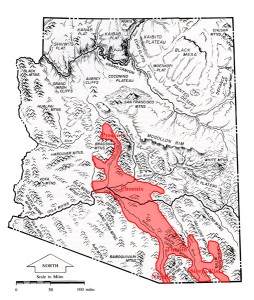by Bob Sharp
What can be done about the pressing problem of balancing conservation and development? How can we integrate quality human settlement patterns into the natural world?
 Here in Arizona, it is projected that the Sun Corridor, stretching from Prescott to Nogales and Sierra Vista, is likely to become a vast megalopolis with perhaps as many as 10 million people. South of the Gila River, this corridor spills into eight important valley systems that share the border with Mexico. This unique border region has a distinct identity and personality. It has the added opportunity to guide its growth to benefit both humans and the natural world.
Here in Arizona, it is projected that the Sun Corridor, stretching from Prescott to Nogales and Sierra Vista, is likely to become a vast megalopolis with perhaps as many as 10 million people. South of the Gila River, this corridor spills into eight important valley systems that share the border with Mexico. This unique border region has a distinct identity and personality. It has the added opportunity to guide its growth to benefit both humans and the natural world.
How can we help this region rise to the challenge?
Since the early 1970’s, local watershed groups consisting of citizens and landowners in this eight-valley region have successfully managed and improved their rural landscapes. However, residents report that all these valleys still face one threat: the encroachment of small, unregulated 5- to 40-acre lots that fragment the healthy structure and ecological functioning of these ecosystems. To replace this default settlement pattern in this area and beyond, we must strengthen our human relationship with the natural world and transform our settlements into places of meaning where inhabitants can grow and evolve.
 The Greeks have 2 words for place: Topos and Chora. Topos is simply an inanimate point or mark on the ground. Chora has a deeper meaning, suggesting choreography or the sharing of a common dance between people and place. Chora implies that we humans live in a symbiotic relationship with location and nature, and this is what generates a sense or spirit of place.
The Greeks have 2 words for place: Topos and Chora. Topos is simply an inanimate point or mark on the ground. Chora has a deeper meaning, suggesting choreography or the sharing of a common dance between people and place. Chora implies that we humans live in a symbiotic relationship with location and nature, and this is what generates a sense or spirit of place.
Quality placemaking is an art that requires combining the built and natural worlds into a meaningful whole, thereby enhancing all inhabitants. Requirements for a successful place may be likened to the essential conditions needed for a seed to germinate, develop and come to fruition. Like light, water, good soil and proper temperature in farms or gardens, certain patterns and attributes bring forth healthy growth in places. Examples include the identification of geographical boundaries, culture, human evolution, history, art, economy and biodiversity. Like well-planted seeds, when the right combination of these patterns exists, a vibrant place flourishes for both humans and the surrounding environment.
Growth is coming to Arizona. We have learned how to be good stewards of rural landscapes. Now is the time, rather than letting development occur haphazardly, to focus on mindfully fabricating and revitalizing our cityscapes and townscapes while continuing to enhance this region’s landscape personality of open space.

 Raised in a three-generation Arizona ranching family, Sharp’s primary concern is responsible, effective land stewardship. With more than 50 years of practical experience as a rancher and a master’s degree in landscape architecture focusing on bioregional planning, Sharp offers a unique perspective toward finding solutions to aimless exurban sprawl in the West. Sharp suggests conservation ranching, along with designing and renovating towns based on traditional and innovative settlement patterns, to replace large-lot development. This approach builds the foundation of what Sharp calls a “new ruralism.”
Raised in a three-generation Arizona ranching family, Sharp’s primary concern is responsible, effective land stewardship. With more than 50 years of practical experience as a rancher and a master’s degree in landscape architecture focusing on bioregional planning, Sharp offers a unique perspective toward finding solutions to aimless exurban sprawl in the West. Sharp suggests conservation ranching, along with designing and renovating towns based on traditional and innovative settlement patterns, to replace large-lot development. This approach builds the foundation of what Sharp calls a “new ruralism.”